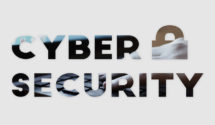Critical Analysis of Internet Governance and Regulating Speech on Internet
Freedom of speech and expression:
Freedom of speech and expression is guaranteed under Article 19(1)(a) of the Indian Constitution. It means the right to express oneself freely by words of mouth, writing, printing, pictures or any other mode. So, it includes representation of ideas through communication or visual representation like gesture, signs etc. This fundamental right is however, restricted under Article 19(2) of the Indian Constitution.
It reads as follows: “Nothing in sub-clause (a) of clause 1 shall affect the operation of any existing law insofar as it relates to or prevents the state from making any law relating to libel, slander, defamation, contempt of court or any matter which offend against decency or morality or which undermines the security of the state or tends to overthrow the state.”
United Nations Model Law:
Further, in mid 1990s, there was an impulsion in the globalisation and computerisation with almost all nations computerising their governance and with the magnificent growth of e-commerce. Due to this growth of international trade and internet communications, there was a need felt to recognise electronic documents that is stored in a computer or in an external storage.
The General Assembly of the United Nations resolved in December 1966 to create the United Nations Commission on International Trade Law (UNCITRAL), with a mandate to promote progressive harmonisation and unification of the law of international trad. Keeping this in mind, the United Nations Commission on International Trade Law (UNCITRAL) adopted the Model Law on e-commerce in 1996. Therefore, in 2000, India enacted its first Information Technology Law namely Information Technology Act, 2000 in order to give legal security to the electronic transactions. It was based on the Model Law adopted by the United Nations Commission.
Information Technology Act:
This Information Technology Act, 2000 divulges three important objectives: First, to provide legal recognition for electronic communications. Second, to assist in electronic filing of documents with government agencies. Third, to amend certain Acts like the Indian Penal Code, 1860, Indian Evidence Act, 1872 etc. The Central Government also has the power to appoint the adjudicating authority to decide if an act that is in contravention with the provisions of the Act has been committed and has all the powers of a Civil Court.
However, with the passage of time, people found new ways of committing crime on cyberspace and it became difficult to deal with all these activities due to which it was felt that the Act needs certain Amendments. It was vividly visible that the 2008 Act was introduced to tackle cyber crimes creating social problems like internet fraud, pornography, data theft, phishing etc. that were not expressly covered under the old legislation. They are covered mainly under Section 66 and 67 of the IT Act, 2000. However, the problems with some of the provisions are as follows:
Section 66A has phrases like ‘menacing character’ which is primarily to deal with instances of threat mails or cyber talking. However, the word has not been defined and could be interpreted so broadly so as to include any kind of harsh tone under it. For instance, when an employer mails his employee saying he will beat him up if he does not get the tickets, which is clearly a joke but could fall under the phrase ‘menacing character.’
Similarly, the section uses words like ‘annoyance’, ‘obstruction’ or ‘ill will’ in clauses (b) and (c) which are again not defined even in the 2008 Amendment Act leading to uncertainty. The Section was however, repealed in March this year as it criminalised anything publishing information that is”false, but for the purpose of causing annoyance, inconvenience, danger, obstruction, insult, injury, criminal intimidation, enmity, hatred or ill will”.
Section 66E provides for voyeurism but it mentions wrongful conduct but not ‘observation.’ Similar legislation like the Sexual Offences Act, 2003 in the United Kingdom and the Canada Criminal Code criminalise even observation of such acts. Looking at the objective of Information Technology Act, 66E should declare viewing of such images or videos online or on any computer resource also illegal.
Section 66F was included with the Amendment in 2008 and has been one of the most controversial sections. In the first clause, it includes acts that cause damage to property and cause deaths but do not include private property. As far as the general definition of terrorism is concerned, it does not restrict the destruction to government property, it includes private property as well. In the second clause, it deals with access to data or information and computer databases but it does not specifically mention acts that involve Internet banking, use of internet channels to make terrorist plans, hacking governmental or non-governmental websites etc. It is undesirable is to have an overlap of definitions in the IT act, IPC and the Unlawful Activities Prevention Act. Therefore, the Section must include act that involve unlawful conduct with the help of Internet.
Model of Governance:
Internet was governed in all these years by ICANN, a non-governmental organisation that used to largely be under the control of USA. It was due to the extensive control that USA had over ICANN, many countries including India refused to co-operate with ICANN as they wanted Internet to be governed by a neutral organisation.
In a positive move, on 1st October, 2016, USA gave up its control over ICANN making it a ‘multi-stakeholder’ organisation.
At this point, it is very important to examine India’s role during Netmundia held in April 2014. It was organized by the Brazilian Government in order to design a open and participatory method of Internet governance. India did not sign the meeting’s outcome statement, which was participated by the various stakeholders of the Internet like government, civil society, academia, business and technical community. This was in the wake of the fact that the United States of America had used National Security Agency (NSA) to spy on its own citizens.
In the meeting, India was of the opinion that Internet is a shared resource and recommended that it should have a ‘globally acceptable legal regime,’ with intergovernmental organisation or multilateral approach. It was also of the opinion that there should be a new cyber jurisprudence to combat cyber crimes that goes beyond the limits of political boundaries.
However, the final statement of the meeting did not have these suggestions incorporated in it, instead it focused on protecting human rights, cultural and linguistic diversity and it backed multi stake holder approach, thereby ignoring India’s suggestions. With regard to cyber jurisdiction, it ruled that it can only be effective through the co-operation of all stakeholders and not through a single organisation.
India did not even send any Minister for the ICANN meeting in June 2014 in London and the diplomats sent did not really participate much in the six-day event.
Therefore, India can now breathe a sigh of relief considering ICANN is no longer under the control of USA. However it remains to be seen if giving up its control is only a facade or will it truly be a multi-stakeholder organisation from henceforth in reality.
There is an emergence of various models of Internet Governance:
Internet Governance through out the world has been indeterminate. With the materialisation of the Internet and occurrence of various social problems, states came up with several ways of Internet governance. The various models split the world into two and soon there were extensive debates held in order to co-ordinate the efforts of all the countries with respect to Internet governance.
The problem of regulation ensued because, unlike the real world, cyberspace does not have any boundaries and there is free flow of information across all the countries in the world, thereby, bringing up jurisdictional problems. These jurisdictional problems bring about the challenges of diverse social, cultural, political and economic beliefs.
However, the analysis of the various models of governance that are active currently in all the countries, it seems that the States are going to play a major role in Internet Governance. This is even though, there is an acute necessity of having an international body for Internet governance by heeding to the needs of all the individual national governments.
Along with the efforts by the national governments to keep the Internet safe, there is also a requirement to make sure that private players and governments of the developing countries also have their say in the regulation of the Internet as it is important to guarantee that every users’ voice be heard before making any sort of decision with regard to governance of cyberspace.
Multi stakeholder Approach of governing cyberspace seems like the best move forward:
I am of the firm opinion that multi stakeholder approach is a positive step towards good Internet governance. There needs to be an International Framework in this regard to preserve freedom of speech along with an establishment of an international body for the same. Internet Governance will remain a work that is in progress and a final solution for it seems unlikely in the near future.
It is not an easy road ahead. It will be difficult to assimilate norms and policies that are acceptable by all. Attempts such as G-*8 Digital Opportunity Task Force and the UN Information and Communications Technologies Taskforce already shed some light on the path ahead. Both were set up by Governments but had the participation of business, individuals and non-profit organisations as well.
However, if efforts are taken now, the international community could soon come up with uniform specifications to bring about a balance between Internet Governance and Freedom of Speech and Expression on the Internet.
Picture Courtesy:Минкомсвязь России










There's 1 Comment